I bought this Dong Ding since it was relatively well-regarded online, and it was reasonably priced enough that I could share it with the small Tea Club that I run. Plus, I’ve had very positive experiences with Mountain Tea so far. I didn’t have super high expectations for this tea, since I figured that a decent Dong Ding would cost at least double this. But I was pleasantly surprised!
This particular tea is a bit unique in the sense that some people may not consider it a true Dong Ding due to its origin. Technically speaking, Dong Ding or Tung Ting teas should come from the area around Dong Ding Mountain in Lugu, which is in Nantou County, Taiwan. TeaVivre published this lovely map that shows the location of Lugu.
However, this offering from Mountain Tea was grown outside of the traditional Dong Ding region. According to Mountain Tea’s website, “Dong Ding is both a famous mountain and a style of tea preparation; the golden ratio of fermentation to roast to which it owes its fame is elusive and difficult to master with consistency.” I have never heard this before, but I suppose I’ll allow it. In general, I’m more concerned with the taste of the tea than with tradition.
This tea is grown at an elevation of 1400 meters above sea level, which is actually a little bit higher than many of the mountains in the usual Dong Ding region. This tea was made using QingXin leaves.
Dry Leaf
These leaves are very tightly rolled into lovely grey-green balls. The leaf structure is very consistent. There area a few stems in the mix, which seems to be the case with most Dong Ding teas that I encounter.
The dry leaf smells very similar to most Dong Ding oolongs…pleasantly roasty, robust yet not overpowering. To me, this tea has aromas of yeast or bread, toasted grain, wood, and a slight sweet and caramelized fruit or sugar scent. There is still a touch of a green, unroasted tea smell.
Teaware
I used a 110 mL gaiwan and 6.5 grams of leaf for this review. All of the infusions were completed with 93˚C/200˚F water.
Brewing
The first steep came out a transparent golden yellow color. The predominant flavor of this tea is the strong roasted taste. I wouldn’t say that this Dong Ding tastes over-roasted, but it is definitely a noticeable part of the flavor.
Once the roasted taste passes over the palate, a bright citrus taste comes through. I would describe it as a sour lemon note. This tea actually tastes somewhat similar to a GABA treated oolong, since GABA treated teas tend to have a slight sour taste. This sour character is not particularly pleasant or unpleasant, it’s just sort of…there. There is also a noticeable spicy flavor in this tea, perhaps cinnamon or clove.
The mouthfeel is quite thick and viscous, while the sour character leaves behind a light dryness.
The second infusion is a bit darker, sort of a dark golden yellow that almost fades into orange. In this steep, the bright citrus flavor dies down quite a bit. A vegetal taste and aroma develops and replaces the citrus note. The spice flavors are much lighter as well.
By the third steep, this tea fades into a simple lightly roasted oolong. The brew is very refreshing and pleasant. This tea has plenty of life to it, and I can tell that it will last through several infusions. The citrus and spice notes have died down and are now just a light accent, letting the vegetal roasted oolong flavors shine through.
The fourth infusion has a similar flavor, but the mouthfeel changes noticeably. The fourth infusion is where this tea really starts to “thin out” and go down easily.
I continued drinking this tea for a few more infusions, but nothing noticeable changed after the fourth steep.
Finished Leaf
The finished leaves were quite beautiful. About half of them turn a dark grey-green color, while the remaining leaves turn a dark purple. These leaves are very large and full, with no dust or broken leaves.
Conclusion
This tea is perhaps not quite as deep or complex as a really top notch Dong Ding oolong, but it is still very good and definitely a great value. I will probably buy this tea again in the future, if that’s any indication of quality. For newcomers to the Taiwanese oolong world, this tea can offer a nice introduction to Dong Ding style oolong tea.
This oolong is incredibly cheap, at only $18 for 5 ounces. If you prefer to buy tea in smaller quantities, you can also buy 2 ounces for $9. This tea is cheap enough that I have been using it as my go-to office tea for drinking “grandpa style.” I don’t usually use super high end teas for drinking in the office, since I would rather save the best teas for when I can really relax and enjoy them in a long gongfu session. But this tea is also good enough that I like to drink it gongfu style as well. It’s pretty tough to find teas that are good enough to drink gongfu style and cheap enough to drink “grandpa style,” so this tea is a winner in my book!
I think that Mountain Tea is a pretty great company. Their prices are a lot better than most competitors, and they still offer very high quality teas. The Mountain Tea website is also very well designed and easy to navigate.
“If this is coffee, please bring me some tea; but if this is tea, please bring me some coffee.” ~ Abraham Lincoln
http://mountaintea.com/products/medium-roast-dong-ding-special-reserve
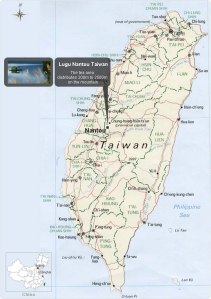
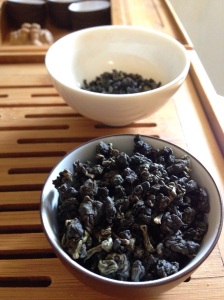
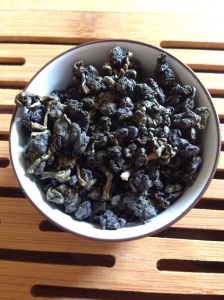

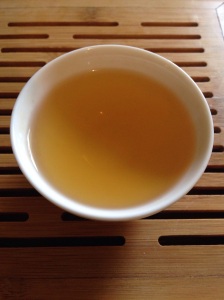
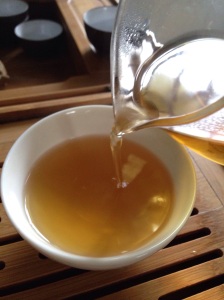
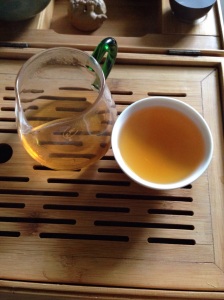

Great review. I like Dong Ding tea quite a bit for work situations where I want to give my colleagues the chance to get into Oolong tea without spending a fortune. I usually stock up the office and show them how to make it. I love lots of types of coffee and tea but Oolong has a special place in my heart. And dong ding reminds me of my time at university. I need to go mqke some!
LikeLike
Thanks for the comment! I’ve been on a bit of a Dong Ding kick lately. I just ordered a really neat one, so I will post about that soon.
Dong Ding seems to be a good entry point for some coffee drinkers (the ones willing to try tea, that is). Maybe something about the roasted flavor conjures up coffee flavor for some people?
LikeLike